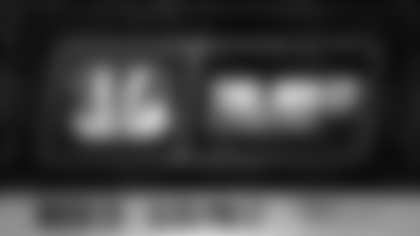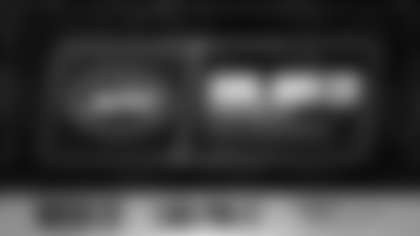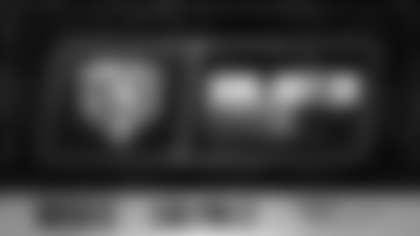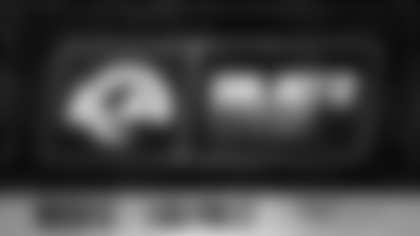Heat Illness and Emergencies Heat-related illnesses have many factors but can be caused when an individual is subjected to extreme temperatures and humidity, and is unable to cool down. Dehydration also can be a factor. Dehydration makes it more difficult for your body to properly cool itself and function, and it takes a toll on your performance.
Causes of Heat EmergenciesPrimary contributors to heat-related emergencies include:
- Heat and high humidity
- Extreme physical exertion
- Layered or rubberized clothing
- Inadequate fluid intake Warning Signs – What to Look For
Without taking precautionary measures, players might experience a heat-related illness. In some cases, they might be unaware they are experiencing this condition and continue practicing. Coaches should periodically check players during practice or workouts for the acute warning signs of heat illness, which can include:
- Nausea
- Headache
- Weakness
- Fainting
- Poor concentration
- Flushed skin
- Light headedness
- Loss of muscle coordination
- Fatigue
- Vomiting Types of Heat Illness
- Heat Cramps: Some athletes may experience heat cramps. This type of cramp is the tightening and spasms experienced in large muscle groups (e.g. quadriceps, hamstrings, etc.). It is often preceded by heavy sweating and large electrolyte losses, this may look like white residue on clothing or equipment. If an athlete is experiencing heat cramps, he or she should stop the activity, find a cool spot to gently stretch and massage the muscle, and drink appropriate fluids like sports drinks that contain important electrolytes including sodium.
- Heat Exhaustion: Another type of heat illness is heat exhaustion. Signs and symptoms of this problem can include profuse sweating, dehydration, fatigue, lightheadedness, rapid pulse, and low blood pressure. Body temperature may be slightly elevated. If heat exhaustion is suspected, the athlete should lie in a cool place with legs elevated, have cool, wet towels applied to the body, drink cool fluids, and have someone monitor their vital signs. With heat exhaustion, often the ill athlete feels better when he or she rests in a cool place and replenishes fluids by drinking cool liquids. Continue to monitor the athlete. If signs are present that the illness is severe or progressing, activate the emergency action plan and follow the emergency action steps, Check-Call-Care. Check the player for signs. Call 911 or the local emergency number immediately. Have someone administer your emergency care plan.
- Heat Stroke: This is the most serious heat-related illness. With heat stroke an athlete will have a high body temperature – 104° F or higher – and could have red, hot, dry or moist skin, vomit, be incoherent or lose consciousness, have shallow breathing and/or a weak pulse. He or she might experience mild shock, convulsions, or a coma, and can die from heat stroke. If he or she goes into respiratory or cardiac arrest, begin rescue breathing or CPR, as appropriate. Cool by any means possible, as quickly as possible. Keep an ice bath or "cool pool" nearby so emergency personnel can decide whether to immerse the player. If necessary, trained medical personnel should place the player in an ice bath while monitoring core body temperature and call for Emergency Medical Services (EMS). Continue to cool and monitor the player while awaiting EMS.Not All Athletes are Alike
Certain types of athletes might be at a higher risk for heat-related illness and should be monitored closely. These types of players include:
- Those with a prior history of heat illness.
- Overweight or obese players.
- Players with a medical history of gastrointestinal, diabetic, kidney, or heart problems.
- Players who were recently (within 2 weeks) ill with upper respiratory illness or cold or flu virus.These athletes may require special attention by coaches and quick action if any symptom of heat illness is noticed.
Age MattersCoaches working with kids should know children may be less tolerant of heat stress than adults, and may be at greater risk for heat illness.
Hot Weather Safety Tips
An important step in avoiding heat illness is adjusting practice or game length and intensity to the environmental conditions. Temperature and humidity combine to create conditions that can produce heat illness and dehydration.
- An air temperature of 95 degrees Fahrenheit is high risk regardless of the humidity.
- An air temperature of 85 degrees Fahrenheit and humidity of 60 percent or above is a high risk.
- An air temperature of 75 degrees Fahrenheit and humidity of 90 percent or above is a high risk.
Equipment Makes a DifferenceWhen necessary, coaches should instruct players to do the following that can help to evaporate heat from their body:
- Wear net-type jerseys.
- Wear T-shirts and shorts, not pads, as they acclimate to the heat.
- Remove helmets when not playing or scrimmaging.
- Avoid wearing sweatshirts and excess clothing.
- Change sweat-soaked clothing.
Hydration Guidelines
- Flavored, cold, lightly salted, and/or sports drinks like Gatorade improve voluntary fluid replacement by players, especially the younger athletes.
- Athletes need to think about hydration before, during and after physical activity. A player should be fully hydrated before beginning practice or competition. Fluids lost through sweat and breathing should be replaced by fluid consumption including during workouts, practices and games (physical activity).
- During activity, players should have unrestricted access to appropriate fluids. Thirst is a late indicator of the need to hydrate. Dehydration has occurred once thirst is turned on.
- The best approach, particularly in hot environments, is to have players weigh in and out each day to help determine adequate fluid replacement needs. Following a competition or workout, the coach should have players weigh out and drink enough to match their weight loss. Remember 16 ounces is one pound. For each pound that the player did not replace, the player may need to consume 20 ounces to fully rehydrate for the next training session.
- Players should consume food and drinks that contain a liberal amount of salt. Options like sports drinks provide some benefit over water because sports drinks give athletes fluid to rehydrate, carbohydrates to fuel muscles, and important electrolytes like sodium to help maintain fluid balance.
What Coaches Should KnowBefore, during and after activity When players are practicing or competing, coaches should follow the following steps to help prevent heat-related illnesses:
BEFORE
- Take the time to acclimate to the heat during the first 2 weeks of practice.
- Schedule practice during cooler times of day.
- Athletes should hydrate throughout the day. Coaches and parents should teach athletes how to monitor their hydration levels by checking the volume, frequency, and color of their urine. If they are hydrated, their urine should look like lemonade. If their urine looks dark, like apple juice, they may need to drink more fluids.
- Coaches should encourage athletes to weigh in and out before and after practices to determine individual fluid losses. (See "After" section for more details.)
DURING
- Schedule and enforce frequent drink breaks and rest periods during physical activity.
- Remove pads and practice in T-shirts and shorts.
- Reduce intensity and/or length of training with high temperatures and/or humidity.
- When it comes to keeping athletes safe on the field, water may not be enough. While water is fundamental to the body, it does not hydrate as effectively as a properly formulated sports drink with sodium.
- Ask athletes to buddy up during practice with a teammate to monitor for warning signs of heat illness.
- Overexposure to high temperature and humidity can cause heat-related illnesses. The National Weather Service issues heat alerts when the daytime heat index (a combination of temperature and humidity) is 105° F or more, which can dramatically increase the risk of the most serious heat-related illnesses. At 80-105° F, fatigue and heat stroke are also possible with prolonged exposure. Athletes playing in the heat for long periods of time wearing protective padding are especially at risk.
- Be prepared by having an ice-filled tub ready for immersing a player in case of an emergency. Carry a cell phone on the field at all times. Know the precise address of the practice or game field and any specific directions required by EMS responders. Remember to cool first before trying to transport the athlete.
AFTER
- Weigh athletes before and following practice as close to nude as they are comfortable and use the change in weight to determine fluid losses. Coaches should monitor athletes to ensure they replace every pound lost during practice with approximately 20 ounces of fluid.
Tips to Hydrate and Fuel for the Football SeasonFootball is a game of strength, speed and skill – all of which can be affected by what, when and how much an athlete eats and drinks. To be ready to perform and stay safe on the field, athletes must approach staying properly hydrated and fueled with the same level of intensity they bring to practice and competition. The right sports nutrition and hydration before, during and after activity can play a vital role in helping athletes get the fuel they need to achieve peak performance. These tips will help keep athletes safe and in the game.
- All athletes benefit from optimal hydration. This is not just a game day issue, but a daily priority. Dehydration becomes gradually worse and worse, leading to performance issues, if an athlete does not hydrate properly every day. To prevent dehydration, especially in hot, humid conditions, athletes need to drink enough of the right fluids, before, during and after physical activity.
- Options like sports drinks give athletes fluid to rehydrate, carbohydrates to fuel muscles, and electrolytes like sodium to help maintain fluid balance and help prevent heat-cramps. Sports drinks also taste good which encourages voluntary drinking to stay properly hydrated.
- Coaches should weigh athletes as close to nude as the athlete is comfortable or in dry clothes before and after practices to determine individual fluid losses and monitor them to ensure they replace every pound lost with approximately 20 ounces of fluid.
- Athletes should check the color of their urine. If it's pale like lemonade and they use the restroom regularly, that's a good sign of hydration. If it's dark like apple juice, they need more fluids.The "4 Downs" of Heat Safety
Helping coaches and parents understand the plays of heat safety
- 1. PREVENTHelp athletes know how to avoid heat illness, and be prepared to identify the warning signs and treat the symptoms.
2. PREPARETake the time to allow athletes to acclimate to the heat during the first two weeks of practice and hydrate properly BEFORE they get to the field.
3. PROPER HYDRATIONChoose sports drinks to help athletes replace electrolytes, especially the sodium lost in sweat. Encourage athletes to hydrate before, during and after practice and games by drinking to match or replace sweat loss.
4. PLANHave a plan to contact medical professionals in an emergency. Also keep a "cool pool" or ice bath nearby so medical personnel can choose to immerse players suffering from heat stroke if necessary.














